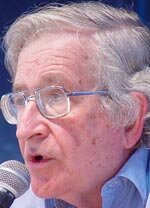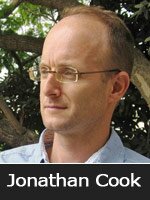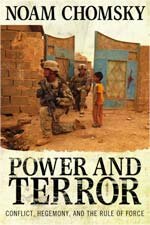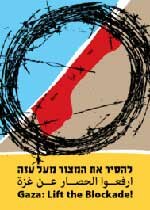By Sasha Polakow-Suransky, Haaretz – 4 June 2010
www.haaretz.com/print-edition/opinion/time-to-come-clean-1.294150
It’s time for Shimon Peres to tell the truth about Israel’s military cooperation with Apartheid South Africa
NEW YORK – The revelations in my book, “The Unspoken Alliance: Israel’s Secret Alliance with Apartheid South Africa,” have angered Israelis across the political spectrum. Israeli politicians from Dan Meridor to Yossi Beilin, and writers from Haaretz’s Anshel Pfeffer to the blogger Emmanuel Navon, have denounced my findings regarding cooperation between Israel and South Africa on nuclear issues, and dismissed them as false or inaccurate.
President Shimon Peres has said “there exists no basis in reality for the claims” put forward in my book. Beilin, despite praising the book on its back cover, has decided to stand by his former boss when it comes to the subject of nuclear weapons. As he told The New York Times: “The president’s denial puts an end to the subject.”
It does not.
Peres is being evasive. Although his signature does not appear on the minutes of a series of meetings that took place in South Africa and Switzerland between March and June 1975, the documents confirm his presence and record the statements he made there. They also show that one topic discussed at the meeting was nuclear-armed Jericho missiles. Peres’ signature appears on a document dated just days after the first discussion of Jericho missiles took place, pledging to keep these and all other defense discussions secret.
To my knowledge, Peres has not denied his presence at these meetings, nor has he claimed that the South African documents are fake. If Peres is so adamant that his version of events is true, he should encourage the government to immediately release all Defense Ministry documents concerning Israeli-South African military cooperation between 1975 and 1990. The Israeli people deserve to see the historical evidence and draw their own conclusions.
A memorandum from the South African chief of staff at the time, R.F. Armstrong, written on the same day as the first Jericho discussion – March 31, 1975 – confirms the South Africans’ exclusive interest in nuclear-tipped Jerichos. A South African who joined Israel Defense Forces’ then-chief of staff Rafael Eitan at a 1979 missile test launch in Israel reiterates this narrow interest, writing that the Jerichos would only be worth the price if the warheads were extremely advanced, “with a nuclear warhead as the ideal.”
The 1975 deal was never consummated, but there is no doubt Peres took part in the discussions and that the South Africans perceived Israel’s proposal as a nuclear offer.
The Jericho missile program continued as a joint project based in South Africa throughout the 1980s, when Israeli rocketry experts went to the coastal town of Arniston. South Africa had by then successfully developed its own nuclear weapons and was seeking to miniaturize them for use as warheads. The Israelis helped with the missile development.
Furthermore, in 1976, Israeli intelligence officials approached Pretoria requesting that the safeguards be lifted on a 500-ton stockpile of South African yellowcake uranium that had built up in Israel over a period of 15 years. The South African minister of mines, Fanie Botha, traveled to Israel that July, where he met with Peres, then-prime minister Yitzhak Rabin and top army officials and nuclear scientists. Botha admitted to me in a 2006 interview that during this trip he lifted the safeguards, freeing Israel to use the yellowcake for military purposes.
In exchange, Israel provided South Africa with tritium – a substance that boosts the yield of thermonuclear weapons. Moreover, Israel funneled money to the nearly bankrupt Botha through a middleman in order to keep him in office until the deal went through.
Fanie Botha’s visit to Israel is confirmed in a 1976 Israel Ministry of Defense document and in the records of a 1988 trial held in camera in South Africa’s Supreme Court.
Haaretz columnist Anshel Pfeffer has criticized what he believes is “shoddy detail” in my book and conclusions that are “convoluted and tenuous at best” (May 28, 2010 ). He adds: “There are much more plausible explanations to Peres’ cryptic reference to ‘three sizes’ of missile payloads, if that is indeed what he said in those secret meetings 35 years ago.”
But Pfeffer does not offer us alternative explanations. Presumably, he believes that the phrase refers to the missile’s range rather than its warhead. The documents themselves reveal this to be absurd, because in the same meetings Peres and Botha openly discussed the range of other missile systems. The term “payload” in English is not an ambiguous one: It refers to a warhead and not a missile’s range.
Pfeffer goes on to misrepresent nuclear program expert Avner Cohen’s views, suggesting that he “dismisses the claims” in my book. In reality, Cohen has praised my research and backed my conclusions. On May 25, he told The Independent: “The discussions between Israel and South Africa referred to in the documents seem to me authentic and refer, I believe, to nuclear weapons, even if euphemisms like ‘correct payload’ were used.”
Thirty-five years later, it is time for Peres to come clean.
Sasha Polakow-Suransky is a senior editor at Foreign Affairs, and author of the recently published “The Unspoken Alliance: Israel’s Secret Alliance with Apartheid South Africa” (Pantheon ).
The complete IOA coverage of Israel’s involvement in nuclear warfare






































